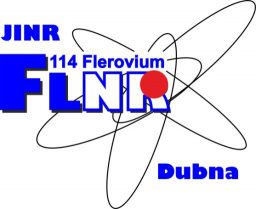Physics background
GaLS – Setup for on-line separation of reaction products by selective laser ionization
The upper part of the present-day nuclear map consists mainly of proton rich nuclei, while the unexplored area of heavy neutron enriched nuclides (also those located along the neutron closed shell N = 126 to the right-hand side of the stability line) is extremely important for nuclear astrophysics investigations and, in particular, for the understanding of the r process of astrophysical nucleogenesis. For elements with Z > 100 only neutron deficient isotopes (located to the left of the stability line) have been synthesized so far. Due to the bending of the stability line toward the neutron axis, in fusion reactions only proton-rich isotopes of heavy elements can be produced. That is the main reason for the impossibility of reaching the center of the island of stability (Z ~ 110 ÷ 120 and N ~ 184) in the superheavy (SH) mass region by fusion reactions with stable projectiles. Because of that we also have almost no information about neutron-rich isotopes of heavy elements located in the “northeast” part of the nuclear map: for example, there are 19 known neutron-rich isotopes of cesium (Z = 55) and only 4 of platinum (Z = 78) (see Fig. 1). Thus, the whole “northeast” area of the nuclear map is still terra incognita. Production and studying properties of nuclei located in this region will open a new field of research in nuclear physics.
Figure 1. Nuclear map as it looks today. Gray strips indicate positions of proton and neutron closed shells. On the inset relative abundance of the elements in the universe is shown with clear visible maxima in the regions of the “waiting points” along the neutron closed shells N = 82 and N = 126.
There are only three possibilities for the production of heavy neutron enriched nuclei. These are the multi-nucleon transfer reactions, fusion reactions with extremely neutron rich radioactive nuclei, and a sequence of neutron capture and beta(-) decay processes. Today the two last methods look unrealizable because of low intensity of radioactive beams and low neutron fluxes in existing nuclear reactors. In Ref. [1] it was shown that the low-energy multi-nucleon transfer reactions are most practicable to explore not-yet-studied “northeast” area the nuclear map. They can be used for the production of new neutron rich isotopes not only in the region of Z~80 but also in the superheavy mass area. Theoretical estimations show that several tens of new nuclides in the region of N=126 and Z~75 can be produced, for example, in the near-barrier collision of 136Xe+ 208Pb, 198Pt+238U or similar reactions (see Fig. 2).
Figure 2. Cross sections for the production of new heavy neutron rich nuclei located along the closed neutron shell N=126 and having the largest impact on astrophysical nucleosynthesis.
Neutron enriched isotopes of transfermium elements can be also produced in the multi-nucleon transfer reactions at low-energy collisions of actinide nuclei. Production and study of properties of neutron rich fermium isotopes (A > 260) are extremely interesting for several reasons. First, all known isotopes of fermium (and of more heavy elements) are located to the left side of the beta-stability line. Secondly, the well-known “Fermium gap” (isotopes 258-260Fm with very short half-lives for spontaneous fission) impedes formation of nuclei with Z>100 by the weak neutron fluxes realized in existing nuclear reactors. In this connection, it is extremely interesting to know what is the first beta(-) decayed fermium isotope and how long is its half-life. This is important not only for reactor but also for explosive nucleosynthesis in which this Fermium gap might be bypassed. See more details on the production of new heavy (and superheavy) neutron enriched nuclei in [1-3].
Unfortunately, heavy nuclei with Z>70 formed in the multi-nucleon transfer reactions cannot be separated and studied at available setups developed quite recently just for studying the products of deep inelastic scattering (such as VAMOS, PRISMA and others). These fragment separators (as well as other setups) cannot separate heavy nuclei with Z>70 by their atomic number (mass separation is more simple with time-of-flight technique, for example). However during several last years a combined method of separation is intensively studied and developed basing on stopping nuclei in gas and subsequent resonance laser ionization of them (see, for example, [4]. Such setup (named GaLS: in Gas cell Laser ionization and Separation) is currently created at the Flerov Laboratory.
[1] Valery Zagrebaev and Walter Greiner, Phys. Rev. Lett. 101 (2008) 122701.
[2] V. I. Zagrebaev, Walter Greiner, Phys. Rev. C83 (2011) 044618.
[3] V.I. Zagrebaev and Walter Greiner, Phys. Rev. C87 (2013) 034608.
[4] Yu. Kudryavtsev et al., Nucl. Instr. and Meth. Phys. Res. B267 (2009) 2908.


